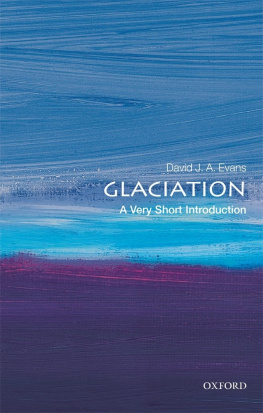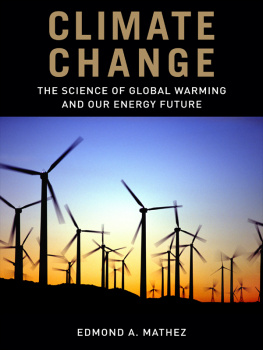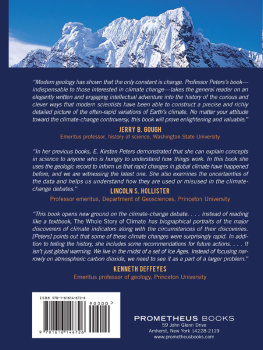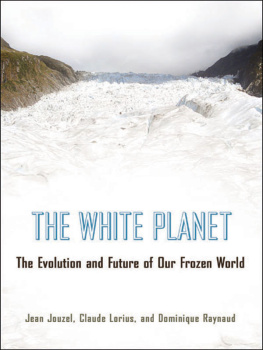WATERS OF THE WORLD
SARAH DRY has been studying the history of meteorology and climate for more than ten years. Her previous books include a biography of Marie Curie (2004) and The Newton Papers (2013). Born and raised in Philadelphia, she worked in environmental journalism, academic publishing, and biotechnology before moving to London in 2001 to study the history of science. She lives in Oxford with her family, and is on the board of the Science Museum.

Scribe Publications
2 John St, Clerkenwell, London, WC1N 2ES, United Kingdom
1820 Edward St, Brunswick, Victoria 3056, Australia
Published by Scribe 2019
Published in conjunction with The University of Chicago Press, Chicago
Copyright Sarah Dry 2019
All rights reserved. Without limiting the rights under copyright reserved above, no part of this publication may be reproduced, stored in or introduced into a retrieval system, or transmitted, in any form or by any means (electronic, mechanical, photocopying, recording or otherwise) without the prior written permission of the publishers of this book.
The moral right of the author has been asserted.
9781911617334 (UK edition)
9781925713145 (AU edition)
9781925693829 (e-book)
Catalogue records for this book are available from the National Library of Australia and the British Library.
scribepublications.co.uk
scribepublications.com.au
in loving memory of Shirley Dry (19182014)
and
for Rob and Jacob
CONTENTS
INTRODUCTION
History can be cruel. Today, John Tyndalls grave in a quiet Surrey cemetery lies unremarked and his books largely unread. During his lifetime, he was a famous and famously controversial scientist who argued that nothing more and nothing less than molecules in motion could explain the deepest mysteries, from human consciousness to the origins of the universe. A gifted communicator, his lectures were standing room only. His books, merging physics and adventure, sold abundantly. He dined with the good and the great, among them Thomas Carlyle and Lord Tennyson.
Despite all this fame, the man whose passionate intensity fanned the fires of Victorian science is today almost forgotten. While the flame of his memory has flickered low, it has not been extinguished. In fact, in the past ten years Tyndall has begun to emerge from more than a century of near-obscurity. Thanks to work he completed in his laboratory in the late 1850s and early 1860s, on what he called the absorption of heat by water vapor and what we today call the greenhouse effect, Tyndall has gained newfound recognition as a so-called father of climate science. A handful of articles have appeared describing his discovery. A climate change research center at the University of East Anglia has been named after him, a major academic project is underway to edit his prodigious correspondence, and the first new biography of him to appear in more than sixty-five years has just been published.
Tyndall has only recently resurfaced because the science of which he is being hailed as a progenitor is (somewhat paradoxically) itself so new. Little more than sixty years ago, climate was usually thought of as something that remained stable over time. Climatology was primarily a geographical science. Different places were understood to have different climates, and the job of the climatologist was to study not how those climates changed but what rendered certain regions distinctive. Their tools were descriptive and taxonomical rather than physical or mathematical. Climate science as a science of change rather than continuity (and distinguished from its older form, climatology, by the change of name) only emerged in the postwar period. When it did, it was the product of a blending of several distinct scientific disciplines. The journal Climatic Change was founded in 1977 with an editorial that made it clear that this was a science that existed almost defiantly between disciplines. Meteorology, anthropology, medicine, agricultural science, economics, and ecology were all encouraged to participate, though in fact the new interdisciplinary science centered around the physical sciences of the earth: oceanography, atmospheric physics, and glaciology, in addition to meteorology, with the important addition of the nascent field of computer science. Before this interdisciplinary synthesis, the notion of climate change was an oxymoron.
The modern field of climate science, then, provides us with a challenge. How to tell the history of a new and self-consciously interdisciplinary discipline? Tyndalls increasing visibility as a father of global warmingalongside that of other progenitors such as Svante Arrhenius, Guy Callendar, and Charles Keelingreveals a growing self-awareness on the part of climate scientists that history can be a tool to render this discipline more coherent. In these prehistories of climate science, success rather than failure is emphasized and crucial discovery milestones occur with reassuring regularity, like signposts on a journey to a known destination. Ideas tend to beget ideas, free of the complications of politics, economics, or nationalism. Histories told by scientists tend to be rose-tinted, but given the interdisciplinary origins of climate science, there is a perhaps even greater temptation than usual to pick and choose the moments, and in particular the discoveries, which make the most sense of the past, which generate a pleasingly direct line from the past to the present. Tyndalls modest re-emergence is part of a larger attempt by climate scientists to tell a singular history of a heterogeneous science.
The desire to draw straight lines through history is understandable, but these lines are almost inevitably misleading. John Tyndall was not the father of global warming in any meaningful sense. Though he helped confirm the special ability of water vapor and carbon dioxide to absorb heat as it radiated from the earths surface, he never imagined that human beings might alter the climate on a planetary or even a regional scale. He was unconcerned about the carbon dioxide released into the atmosphere by burning coal. Nor did his research prompt his contemporaries to make their own research into human effects on climate. Nor, indeed, was Tyndall strictly speaking the first person to publish on the topic. An American woman named Eunice Foote beat him to it by three years. A milestone approach to telling the history of climate science misrepresents the complexity of its deeper history. Sometimes the result is to overemphasize the influence of a particular figure. More often, people and ideas that do not seem congruent with current scientific thinking drop out of this kind of history. The result is an impoverished understanding of the past as well as the present.
Tyndall did indeed help lay the groundwork for our contemporary understanding of the planet, and he more than merits a revival in the popular and scientific imagination, but he achieved his influence in more complex and contentious ways than the story of a singular discovery of greenhouse warming captures. What Tyndall achieved was to help change what it meant to study the earth. He did so in a passionately physical wayputting his body in danger and relying on his manic tendencies to enable him to focus on a problem to the exclusion of all else.
He used his physical energy to pioneer new ways to witness and to understand (the two always went together) the wonder of nature: its continuity. No substance better exemplified this continuity for Tyndall than water, a material he studied in all its manifestations with commitment verging on evangelical passion. Every occurrence in Nature is preceded by other occurrences which are its causes, and succeeded by others which are its effects, he began his bestselling book on The Forms of Water . The human mind is not satisfied with observing and studying any natural occurrence alone, but takes pleasure in connecting every natural fact with what has gone before it, and with what is to come after it. Tyndall invited his reader to join him in tracing a river to its source, to follow it beyond its many tributaries and up into the atmosphere itself, from which it had fallen as rain. To produce that rain, Tyndall continued, water vapor must have been evaporated, via the action of heat, from the ocean into the atmosphere. This landed him at the ultimate source of all movement on earth. Is there any fire in nature which produces the clouds of our atmosphere? Tyndall asked rhetorically, before answering triumphantly that by tracing backward, without any break in the chain of occurrences, our river from its end to its real beginnings, we come at length to the sun.
Next page








